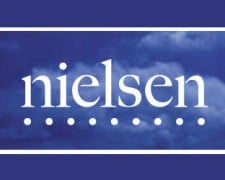 It’s no secret: consumers like choices. These days, consumers have options to view content in a variety of ways, from streaming on a mobile phone to watching Video-On-Demand (VOD). And as VOD continues to take an increasing slice of the TV pie, a new Nielsen study found that marketers can take advantage of viewers’ growing taste for this menu-driven content. In fact, the study found that distributing popular entertainment programs as on-demand choices can have a positive impact on ratings contribution, and possibly even recapture certain demographic groups that were trending in other directions.
It’s no secret: consumers like choices. These days, consumers have options to view content in a variety of ways, from streaming on a mobile phone to watching Video-On-Demand (VOD). And as VOD continues to take an increasing slice of the TV pie, a new Nielsen study found that marketers can take advantage of viewers’ growing taste for this menu-driven content. In fact, the study found that distributing popular entertainment programs as on-demand choices can have a positive impact on ratings contribution, and possibly even recapture certain demographic groups that were trending in other directions.
After all, the VOD phenomenon—bolstered by subscription VOD services such as Netflix, which has a 29 percent penetration rate in U.S. TV homes—is helping consumers to embrace accessing content through a selection menu as opposed to simply channel surfing. At least some of the credit for this viewing trend should be attributed to the cable operators and their content deals, which have led to increasingly stocked VOD libraries, as well as the viewing delight of consumers. The cable operators have also placed an emphasis on improving the interfaces that allow consumers to easily access this content.
While traditional set-top-box VOD has become an increasingly important option for content owners, cable companies and consumers, it’s also an opportunity for marketers. The approach of taking recently telecast programs and making them available via an on-demand menu with all national ads included (Recently Telecast VOD) could appeal to advertisers. On-demand users actually watch longer and tend to watch more of the commercials shown with their programs. While research is still ongoing, a 30-minute program that was studied found that on-demand users watched an average of 28 minutes, compared with digital video recorder (DVR) users’ 23 minutes and live viewers’ 20 minutes.
In fact, on-demand viewers indexed highest on commercial viewing (likely attributable to the fact that fast-forwarding is often disabled). Despite initial predictions that disabling fast-forwarding could dissuade viewers from VOD, consumers know a good deal when they see it—premium, primetime content when they want it, in exchange for commercial viewing.
The rise of VOD could affect DVR usage, which has seen steady gains in time spent over the last half-decade. For the program analyzed, a higher percentage of non-live commercial viewing (55%) came from VOD for persons 18-24 when compared to DVR contribution. As expanded libraries of cloud-based VOD, coupled with improved interfaces continue to gain industry momentum, this could be a technological harbinger that on-demand is in prime position to change viewers’ consumption habits.
Methodology
The study contains consumer consumption insights culled from Nielsen NPOWER over a five year trend, as well as from existing materials, such as Nielsen’s Cross-Platform Report(s) and 3 Screen Report(s). The study also looks at Video-On-Demand (VOD), Subscription-based Video-On-Demand (SVOD) services and Recently Telecast Video On-Demand (RTVOD) usage over various time periods and months in the second and third quarters of 2013.








